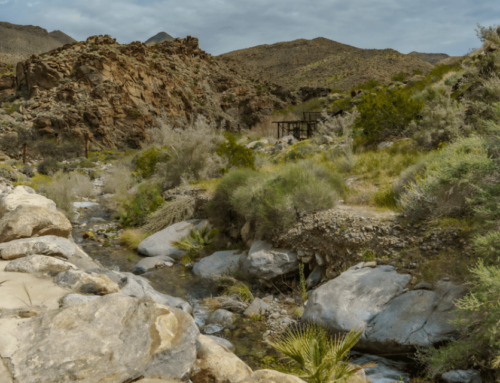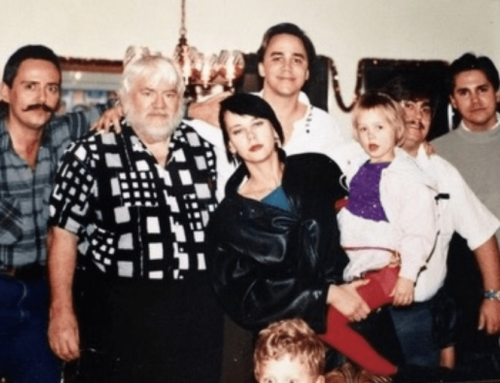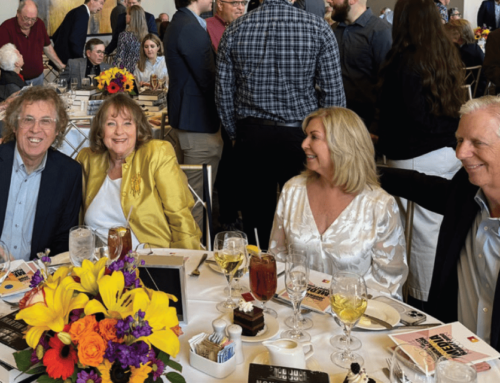
Winter/Spring Garden Showtime
By Philip Bonafede

Philip Bonafede has been growing desert gardens for over 45 years and has been doubling as one of the greater Joshua Tree area’s snake wranglers and snake aversion dog trainers since 1998. You can contact him at 760-401-4488 or email at pbdesert@earthlink.net
Sprout your spring gardens now! Start your seedlings indoors, in a window, in seeding trays or small pots (pots avoid subsequent transplanting). Plant the things you enjoy regularly in your kitchen, like: lettuce, spinach, cilantro, beets, carrots, potatoes, tomatoes, basil, garlic, and parsley. The trick is having the space, quality organic soil, and sunlight. I always recommend a greenhouse for tomatoes and all vertical vines. Covered raised beds for smaller varieties like carrots, garlic, cilantro, celery, scallions, etc.
TOMATO LOVERS?
Nothing tastes better than a vine ripe, homegrown, organic tomato! I highly suggest you try two or three of your favorite indeterminate tomato varieties because they grow year-round! In a year, you will learn a lot about growing and caring for them. Limited time and patience? I suggest the garden center and choose a determinate variety, growing in a pot. You bring them home, water them daily, they flower, you get a harvest, the plant dies, then you compost the remains. But if you are like me and love challenges, you can plant seeds and clones. My best harvest is between January and May. After June the summer heat (even with a cooling system) slows them down, so they tend to produce fewer tomatoes through the warmer months. I plan to experiment with garden shading again this summer after having success with it in the past!
CLONING TOMATOES
Take a 1-gallon apple juice bottle, fill with water to the top and slide in a ‘sucker’ cutting from your tomato plants. I cut up to 12-inch suckers for cloning to get a hefty root stock. Three inches on up will work just fine. My greenhouse vines are over 8 feet, so suckers (tomato branches below the main stem) are easy to find, yet any size plant will begin producing suckers after 2 feet of growth. The roots sprout in your kitchen window over 30-90 days. Each little ‘hair’ on the stem will eventually become a root. I suggest you transplant them into a minimum 3-gallon pot with healthy organic soil, earthworms, worm castings, straw, sticks, crushed crab and lobster shells, powdered kelp, and rock dust powder. Follow the transplanting technique I spoke of in my previous articles, it works! (Hands never touch the soil, only water.) Next, I use a string/ wire support system, hung from the avian wire ceiling (keeps most varmints out) of my greenhouse. I use bendable, sturdy wire, bend hooks into both ends, attach a string and drop it down to the tomato plant for support. My tomatoes grow in 5- and 10-gallon pots and are fed fresh organic material every month. Earthworms play a vital role unless you use inorganic, blue colored fertilizers that claim, “miracle growth.” Big no-no! These ‘fertilizers’ kill your organic material and microorganisms and starve your earthworms! (Imagine you replaced drinking water with caffeine drinks.) Stick to all natural organic plant foods. Neptune’s Harvest is an excellent source! https://www.neptunesharvest.com/ocean-crest.html

Pollination
My 16mm plastic roof covering pops in the wind causing the strings attached to the avian wire below it to send good vibrations to the plants and flowers thus circulating their pollen. If you do not have an enclosed set-up, simply thump the base of the plant with your finger and this will assist in the pollination process. Some people use a toothbrush and pollinate each flower by hand! This technique is obviously not practical when you have hundreds of flowers! I use fans to circulate the air and pollen. Messes with the infamous pita bugs too!
Would you like to share your thoughts, questions, and experiences? Please join my Facebook page: Joshua Tree Gardening https://www.facebook.com/groups/1180425139477213
Today I picked an entire salad out of my garden in
January…Yummer fer the tummer! Curious?
pbdesert@earthlink.net
Desert Resident since 1973
Rattlesnake handler since 1966
Phil’s K9 Rattlesnake Aversion Classes












